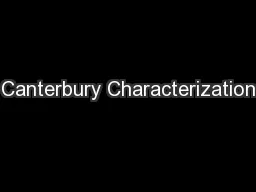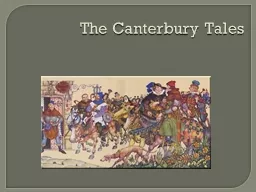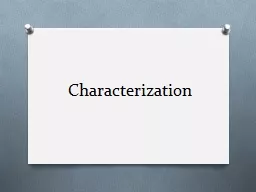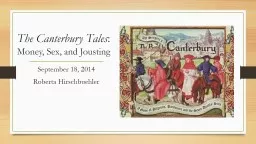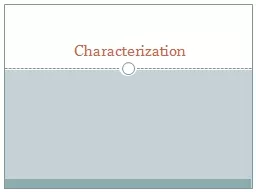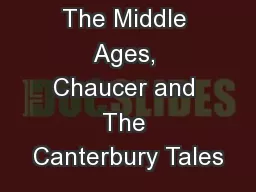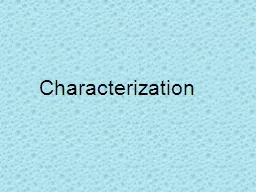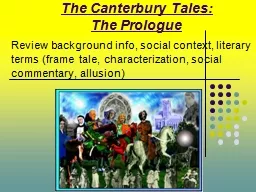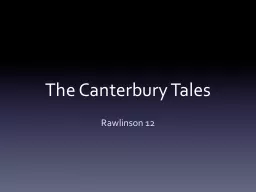PPT-Canterbury Characterization
Author : danika-pritchard | Published Date : 2018-02-04
By Our Group Summoner Story Homeless or home less than desirable older man in an inn Evidence there was a summoner with us at the inn SpeechActions Drunk swearing
Presentation Embed Code
Download Presentation
Download Presentation The PPT/PDF document "Canterbury Characterization" is the property of its rightful owner. Permission is granted to download and print the materials on this website for personal, non-commercial use only, and to display it on your personal computer provided you do not modify the materials and that you retain all copyright notices contained in the materials. By downloading content from our website, you accept the terms of this agreement.
Canterbury Characterization: Transcript
Download Rules Of Document
"Canterbury Characterization"The content belongs to its owner. You may download and print it for personal use, without modification, and keep all copyright notices. By downloading, you agree to these terms.
Related Documents

